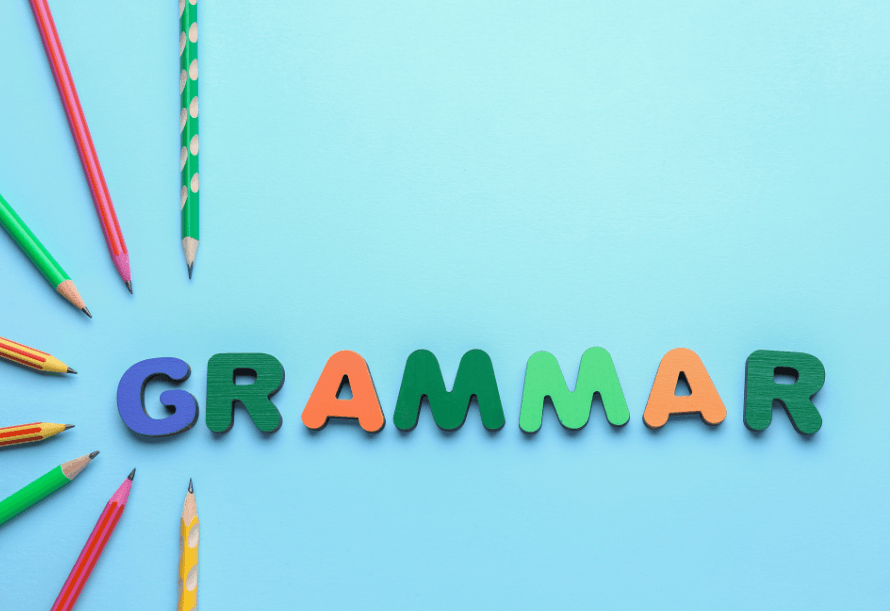Basic English Grammar for Kids: Easy & Effective Ways to Teach

Table of Contents
- Basic English Grammar for Kids
- Effective Methods to Teach Grammar
- Grammar Topics to Prioritise by Age Group
- Why Is English Grammar Important for Kids?
- Common Mistakes Kids Make in Grammar (and How to Fix Them)
- Why PlanetSpark Is the Best Place to Learn Basic English Gra
- Conclusion
- FAQs: English Grammar for Kids
Learning basic English grammar is one of the most important parts of your child’s language development. It helps them speak with clarity, write with confidence, and succeed in school. But grammar lessons don’t have to be boring or confusing. With the right approach, teaching basic English grammar for kids can be fun, engaging, and surprisingly easy!
In this blog, we’ll explore the most effective ways to introduce grammar concepts to children. Whether your child is just starting to learn about nouns and verbs or needs help understanding sentence structure, this guide will give you practical tools and activities that work.
Basic English Grammar for Kids
Understanding the basics of English grammar is essential for every child’s language development. Grammar lays the foundation for clear communication, strong writing, and confident speaking. Whether your child is just starting school or is already building sentences, a step-by-step approach to grammar makes learning both fun and effective.
Below are the key components of basic English grammar for kids, explained in a child-friendly way, with examples and practical tips for parents to reinforce at home.
1. Nouns: The Naming Words
Nouns are the building blocks of any sentence. Kids should first learn that a noun names a person, place, animal, or thing. This helps them identify the objects and people in their world through language.
Examples for kids:
boy, school, tiger, book, apple
Tip: Play games like “Name 5 nouns in this room” or use flashcards to help children identify nouns around them.
2. Pronouns: The Replacing Words
Once kids understand nouns, introduce pronouns, words that replace nouns to avoid repetition and make sentences sound natural.
Examples:
he, she, it, they, we, you
Activity idea: Ask your child to replace a noun in a sentence.
“Emma is reading a book. She loves it.”

Build a Strong Grammar Foundation
Book your free PlanetSpark trial class and see your child learn grammar through stories and games!
3. Verbs: The Action Words
Verbs tell us what someone or something is doing. They show action or a state of being. Kids love action, so verbs are easy to teach through movement.
Examples:
run, jump, play, read, is, are
Fun tip: Turn verb learning into a game. Say a verb aloud and have your child act it out!
4. Adjectives: The Describing Words
Adjectives describe nouns and add detail to a sentence, making writing more colourful and engaging.
Examples:
happy child, tall building, red balloon, cold water
Activity idea: Ask your child to describe their favourite toy using three adjectives.
“It’s soft, small, and yellow.”
5. Adverbs: Describing the Action
Adverbs describe how, when, or where something happens. They add information to verbs and often end in -ly.
Examples:
quickly, slowly, yesterday, here, outside
Example sentence:
“She ran quickly to catch the bus.”
Home practice: Ask questions like “How did you eat your lunch today?” to encourage adverb use.
6. Prepositions: Showing Position and Direction
Prepositions are small but mighty words that show the relationship between a noun/pronoun and other parts of the sentence. They often show location, time, or direction.
Examples:
in, on, under, behind, near, between
Learning tip: Use toys to demonstrate prepositions. Place a toy under the table, on the bed, or next to the chair and ask your child to describe it.
7. Articles: A, An, The
Articles are small words that come before nouns to clarify meaning. There are two types: indefinite (a, an) and definite (the).
Examples:
A dog, an elephant, the sun
Rule of thumb:
Use “a” before words that begin with a consonant sound and “an” before words that begin with a vowel sound.
Use “the” when talking about a specific thing.
8. Conjunctions: Joining Words
Conjunctions help connect words, phrases, or sentences. They are essential for sentence flow and expression.
Examples:
and, but, or, because, so
Examples for kids:
“I want to play and draw.”
“I like pizza, but I don’t like olives.”
Game idea: Let your child create silly sentences by joining two ideas with “and” or “but.”
9. Sentence Structure: Building Clear Thoughts
Every sentence must follow a clear pattern. The basic sentence structure for kids includes:
Subject + Verb + Object
This helps kids build meaningful and grammatically correct sentences.
Example:
“The cat (subject) eats (verb) fish (object).”
Encourage children to use this structure to talk about their day or describe a picture.
10. Capitalisation and Punctuation
Good grammar isn’t just about words it’s also about how sentences start and end.
Capital letters go at the beginning of sentences and for proper nouns.
Punctuation marks like full stops (.), question marks (?) and exclamation marks (!) help express meaning.
Examples:
“I have a pet dog.”
“Do you want to play?”
“Wow, that’s amazing!”
By mastering these basic concepts, children can begin forming full, meaningful sentences and expressing themselves with clarity. The key is repetition, fun learning methods, and real-life examples that connect grammar to their everyday world.

Personalized Grammar Learning Awaits
Get expert guidance, progress tracking, and joyful grammar sessions. Reserve your free session.
Effective Methods to Teach Grammar
Teaching basic English grammar for kids can feel like a daunting task, especially when you're trying to simplify complex rules into engaging and age-appropriate content. However, with the right methods, grammar lessons can become fun, memorable, and highly effective.
Here are some proven techniques that help children grasp basic English grammar concepts easily:
1. Interactive Storytelling
Use short stories that highlight specific grammar rules. For example, a story where each sentence features a singular or plural noun can help children naturally absorb the concept without formal instruction. After the story, ask children to identify the grammar elements, such as nouns, verbs, or adjectives.
2. Hands-On Grammar Games
Games like grammar bingo, sentence matching, or board games with vocabulary challenges can turn dry lessons into exciting learning moments. These methods encourage children to practice basic grammar in a pressure-free environment while having fun.
3. Visual Aids and Charts
Colorful posters showing parts of speech, punctuation rules, or verb tenses can make a big difference in visual learning. Displaying these in classrooms or study areas at home helps reinforce the rules of basic English grammar for kids through daily exposure.
4. Daily Practice with Real-Life Sentences
Use everyday situations to teach grammar. For instance, while cooking, you might say, “We mix the ingredients” and highlight the verb. When walking outside, point out “That is a tall tree” and talk about adjectives. This method shows kids that grammar exists all around them, not just in books.
5. Worksheets and Online Exercises
Printable worksheets and digital platforms offer structured ways to review grammar. Choose age-appropriate worksheets that focus on foundational topics such as subject-verb agreement, articles, prepositions, and noun-verb forms. Online tools often provide instant feedback, helping kids learn from their mistakes.
6. Grammar Through Songs and Rhymes
Children retain concepts better when they are linked to music. Use songs that incorporate parts of speech, punctuation, or sentence structure. This is especially helpful when introducing basic grammar rules to early learners.
7. Role Play and Dialogue Building
Encourage kids to act out scenes using scripted lines that reinforce grammar. Ask them to change tenses or convert singular nouns to plurals within their dialogues. This active method improves both grammar and spoken English skills.
8. Reward-Based Learning
Use stars, stickers, or points to motivate young learners. When they successfully identify a verb or correct a sentence, acknowledge their effort. Positive reinforcement helps build confidence and a willingness to engage with grammar challenges.
Grammar Topics to Prioritise by Age Group
| Age | Focus Grammar Topics |
|---|---|
| 4–6 | Nouns, Pronouns, Simple Verbs, Articles |
| 7–9 | Tenses, Adjectives, Prepositions, Sentence Structure |
| 10–12 | Complex Sentences, Conjunctions, Active-Passive Voice |

From Nouns to Narratives
Help your child master grammar and writing through real-life usage. Book a class now
Why Is English Grammar Important for Kids?
Understanding basic English grammar is essential for children, not just for academic success but also for developing clear and confident communication. When kids learn grammar effectively, they gain the ability to express their ideas accurately, both in speaking and writing.
Here’s why English grammar for kids matters so much:
Builds a Strong Language Foundation: Grammar is the building block of any language. For kids, learning grammar from an early age helps them form correct sentences, use proper tenses, and speak with clarity.
Improves Academic Performance: Children who grasp basic English grammar early perform better in school. Whether it's writing essays, answering comprehension questions, or reading literature, grammar plays a crucial role.
Boosts Confidence in Speaking and Writing: Kids who know how to use the right grammar feel more confident during presentations, storytelling, or public speaking. It reduces hesitation and improves fluency.
Enhances Reading and Comprehension: Knowing grammar helps children understand sentence structure, meaning, and tone while reading. It allows them to pick up on nuances and interpret text more effectively.
Supports Creative Expression: Whether your child is writing a story or crafting a speech, grammar helps bring their thoughts to life in a structured, impactful way.
Helping your child learn grammar effectively sets the stage for lifelong communication skills. It’s not about memorising rules, but about understanding how language works and using it with purpose.
Common Mistakes Kids Make in Grammar (and How to Fix Them)
| Mistake | Example | Correction Tip |
|---|---|---|
| Incorrect verb tense | “He go to park” | Teach: “He goes to the park” |
| Article misuse | “I saw elephant” | Rule: Use “an” before vowel sounds |
| Wrong plural | “Childs are playing” | Clarify: “Children” is an irregular plural |
| Subject-verb disagreement | “They was happy” | Explain: Plural subjects take plural verbs |
| Preposition confusion | “He is good in cricket” | Fix: Use “good at” instead of “good in” |

Why PlanetSpark Is the Best Place to Learn Basic English Grammar for Kids
When it comes to building a strong foundation in grammar, PlanetSpark stands out with its child-focused, usage-based approach. Unlike traditional methods that rely on memorising rules, PlanetSpark teaches basic English grammar for kids through practical, engaging, and interactive techniques.
What Makes It Effective:
Interactive, Not Rote: Grammar is taught through stories, role plays, and practical error correction, not memorisation.
Concept to Usage: Every lesson moves from rule ➝ examples ➝ sentence building ➝ writing tasks.
Gamified Learning: Kids enjoy quizzes, puzzles, and online games that make grammar fun.
Writing Integration: Grammar topics are reinforced through structured writing exercises.
Level-Wise Growth: Students move from basic to advanced grammar with milestone tracking.
Parent Updates: Regular reports show growth in sentence fluency and grammatical accuracy.
Conclusion
Teaching English grammar to kids doesn’t have to be dry or difficult. With the right methods, like visual learning, games, stories, and real-world practice, children can master grammar naturally and joyfully. Start small, stay consistent, and always focus on application over memorisation.
Whether your child is struggling with basics or ready to move toward advanced grammar, what matters most is making learning fun and meaningful. With guided strategies and modern tools, your child can gain the confidence to write and speak with clarity, accuracy, and creativity.
Readers Also Read:
Singular and Plural Nouns – Easy Grammar Guide for Kids
Help your child confidently identify and use singular and plural forms with fun examples and practice tips.
English Grammar Prepositions for Class 2 – A Simple Learning Guide
Introduce your child to basic prepositions through relatable visuals and engaging sentences.
FAQs: English Grammar for Kids
Q1. What is the best age to start teaching English grammar to kids?
Children can start learning basic grammar concepts like nouns, verbs, and simple sentence structures as early as age 4–5, especially through stories and conversation.
Q2. How can I make English grammar fun for my child?
Use games, songs, interactive worksheets, and storytelling to teach grammar concepts. Digital tools like grammar apps or quiz-based platforms also keep kids engaged.
Q3. What are the basic grammar topics every child should know?
Key topics include:
- Parts of speech (nouns, verbs, adjectives)
- Tenses (past, present, future)
- Punctuation
- Sentence structure
- Subject-verb agreement
- Question formation
Q4. How much grammar should a child learn each week?
Focus on 1–2 grammar concepts per week, with enough practice and application. It’s better to go slow and ensure usage than to rush through rules.
Q5. Can online classes help improve my child’s grammar?
Yes! Platforms like PlanetSpark use interactive, story-based, and gamified methods to make grammar easy and effective for kids. Progress is structured and measurable.
Download Free Worksheets
Personalized Communication Report
Record a video to get a AI generated personalized communication report for your child

Hi There, want to try these
tips for your child with
LIVE with our expert coach?
Let's check your child's
English fluency

